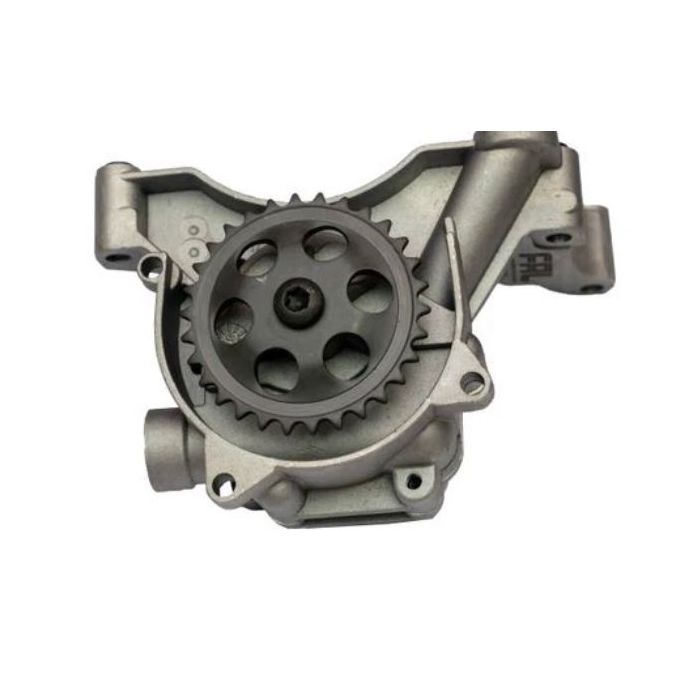Pick a cutting-edge clp engine for superior results.
Pick a cutting-edge clp engine for superior results.
Blog Article
Just How a Clp Engine Can Improve Effectiveness in Numerous Industries
The advent of CLP engines marks a significant change in functional performance across various sectors, driven by their capability to enhance fuel usage and minimize downtime. As companies progressively focus on sustainability along with performance, the duty of CLP engines becomes also extra critical.
Introduction of CLP Engines
CLP engines, or Continual Liquid Propellant engines, stand for a considerable development in propulsion modern technology, particularly for space applications. These engines utilize a continual feed system that permits the sustained expulsion of propellant, resulting in improved effectiveness and performance compared to traditional strong or hybrid propulsion systems. By maintaining a continuous circulation of liquid propellant, CLP engines can accomplish more precise drive control, which is crucial for maneuvering spacecraft in different goal situations.
The layout of CLP engines incorporates innovative materials and innovative fuel monitoring systems. clp engine. This causes reduced weight and boosted dependability, crucial variables for long-duration space missions. The constant procedure lessens the threat of combustion instability, a common difficulty in traditional rocket engines.

Advantages in Manufacturing
The production of Continuous Fluid Propellant (CLP) engines presents several notable advantages that improve both effectiveness and cost-effectiveness. One of the key advantages is the structured production procedure, which reduces the complexity related to standard propulsion systems. By making use of liquid propellant, manufacturers can attain better accuracy in engine efficiency, resulting in optimized power result and reduced waste.
Additionally, CLP engines promote a greater degree of modularity, permitting for much easier integration right into various production lines. This flexibility can substantially reduce lead times and improve overall functional versatility. Using CLP technology also has a tendency to minimize the need for extensive maintenance because of less moving parts, which converts right into decreased downtime and operational costs.

Applications in Logistics
Leveraging Continual Liquid Propellant (CLP) engines in logistics supplies substantial advantages in functional effectiveness and integrity. These engines supply a durable service for numerous transportation demands, making it possible for the seamless motion go to my blog of goods throughout substantial distances. The inherent design of CLP engines enables constant power output, which converts right into smoother and that site a lot more foreseeable transportation timetables.
Among the essential applications of CLP engines in logistics is in heavy-duty freight transport, where they can drive both ground and airborne vehicles. Their capability to keep high efficiency under varying load problems makes certain that distribution timelines are fulfilled, consequently enhancing client satisfaction. Additionally, CLP engines can be integrated right into automated logistics systems, helping with real-time monitoring and maximizing route planning.
Additionally, the longevity of CLP engines decreases upkeep downtime, permitting logistics companies to maximize their operational capabilities. This is specifically valuable in warehousing operations, where effectiveness in managing and delivering goods is vital. As logistics remains to evolve, the combination of CLP engines stands for a forward-thinking method that not only enhances efficiency but additionally supports the market's expanding demands for dependability and speed.
Influence on Power Performance
Just How do Continuous Fluid Propellant (CLP) engines enhance energy performance in transport? CLP engines utilize a constant flow of fluid gas, enhancing burning processes and maintaining a stable drive output. This layout reduces energy losses related to standard combustion engines, where gas delivery can vary and lead to inadequacies.
The continual procedure of CLP engines permits a article more efficient thermal cycle, resulting in greater details impulse contrasted to standard engines. clp engine. This equates to reduced fuel consumption for the exact same amount of work done, dramatically decreasing operational costs across various transport industries, including aeronautics and maritime sectors
Furthermore, the ability of CLP engines to preserve ideal performance under differing lots conditions reduces the need for frequent acceleration and slowdown, better boosting fuel efficiency. Enhanced power effectiveness not just adds to cost savings yet also causes decrease greenhouse gas exhausts, straightening with international sustainability objectives.
Future Trends and Innovations
Arising developments in Constant Liquid Propellant (CLP) engine technology pledge to transform the landscape of transportation efficiency and sustainability. As markets pivot towards greener choices, CLP engines stand at the forefront, integrating ingenious products and design approaches that boost efficiency while lessening environmental influence.
Among one of the most encouraging trends is the adoption of crossbreed systems that combine CLP engines with eco-friendly power sources. This synergy can optimize gas intake and minimize discharges, lining up with worldwide sustainability objectives. Improvements in computational fluid characteristics (CFD) are assisting in the style of more aerodynamically effective engines, leading to reduced drag and improved gas effectiveness.
Furthermore, the development of smart surveillance systems is established to enhance functional efficiencies. These systems utilize information analytics and IoT modern technology to maximize engine efficiency in real-time, making certain that the engines run within their most effective parameters.
As research study continues to check out alternate propellant formulations-- such as biofuels and artificial gas-- the future of CLP engines looks appealing. By taking advantage of these innovations, sectors can not only boost their performance however additionally contribute significantly to a cleaner, a lot more lasting future in transportation.
Final Thought
To conclude, CLP engines stand for a significant improvement in performance across several markets. Their ability to enhance fuel usage and decrease functional costs, combined with a continuous feed system, enhances power outcome and functional integrity. The combination of innovative materials and less relocating components minimizes upkeep requirements, while placement with sustainability goals positions CLP engines as a pivotal technology for the future. Proceeded technology in this field guarantees further enhancements in effectiveness and ecological efficiency.
Report this page